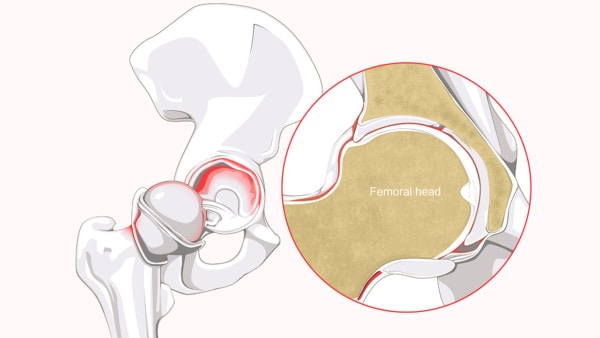Labral Tears and a Track Athlete – Surgery on Kids
On my Facebook Live show “You’ve Got the Power” on Friday I spoke about how crazy it is that we continue to offer aggressive orthopedic surgery to young athletes. Today I’d like to highlight one who avoided hip labral surgery. Let’s dig in.
Why Are We Operating on Kids?
One of the big differences in the past decade has been the number of orthopedic surgeries on teens. What used to be rare has exploded. Basically, our kids are getting the same surgeries as older professional athletes who are trying to eke out a contract extension. The problem? When we operate on teen ACLs for example, 2/3rds will have arthritis by the time they’re 30.

Akora Illustration/Shutterstock
A Sprinter with Hip Pain
Last year I performed an evaluation on an elite teen sprinter who had started experiencing pain in the back of her hip (ischial tuberosity) and outside hip. She went to two months of physical therapy, but when she was unable to return to training, she had an MRI which revealed a labral tear in the right hip and a possible tear in the left. The labrum is the lip around the hip socket.
The next step? Hip arthroscopy surgery for the labral tear. The problem? Tons of young athletes without hip pain have MRIs showing labral tears and other abnormalities, but no hip pain. Meaning that there is nothing about seeing a labral tear on MRI that means it needs surgery.
One of the clues missed by the surgeon was that previously in 2017, she had a tear of the hamstrings where it attaches to the ischial tuberosity that had healed on its own. About that same time, she had a low back injury jumping off of a retaining wall which caused low back pain for 3-4 weeks. On her exam, it was clear that he back was a major player in her hip pain.
What her treatment looked like is shown in the video above. Her treatment plan included injecting her own platelet growth factors around her irritated S1 nerves, into her low back ligaments, the deep lumbar stabilizing muscles. Platelet-rich plasma was injected into her bilateral SI joint ligaments, the right ischial tuberosity, right PSOAS, right adductor, symphysis pubis, right posterolateral iliac crest, right distal ITB, right hip capsule, and right labrum. Quite a bit more complicated than either a labral surgery or simple hip injection.
How did she do? I just saw her back around a year later and she has no more hip pain and was able to return to training.
FB Live
My FB Live show with Q and A happens every Monday and Friday at 1 pm MST (12 pm PST and 3 pm EST). Please join us on the Regenexx Facebook page on Fridays and at the Centeno-Schultz page on Mondays. We start with a specific topic, but you can ask questions about whatever topic you like.
The upshot? Why are we operating on all of these kids and setting them up for early arthritis and other problems? Many times all they need is a good diagnosis and precise injection of their own concentrated platelets.
If you have questions or comments about this blog post, please email us at [email protected]
NOTE: This blog post provides general information to help the reader better understand regenerative medicine, musculoskeletal health, and related subjects. All content provided in this blog, website, or any linked materials, including text, graphics, images, patient profiles, outcomes, and information, are not intended and should not be considered or used as a substitute for medical advice, diagnosis, or treatment. Please always consult with a professional and certified healthcare provider to discuss if a treatment is right for you.